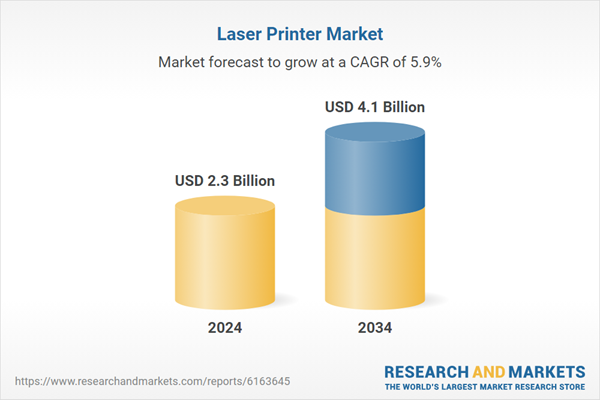Additionally, widespread adoption of remote and hybrid work environments has accelerated the demand for wireless and cloud-enabled printers. This shift is redefining the workplace ecosystem, enabling teams to print and manage documents from multiple locations. Institutional buyers, including schools, government agencies, and corporations, are increasingly investing in laser printers that meet their high-volume requirements. The seamless integration of cloud platforms and mobile connectivity into newer laser printer models is pushing the industry forward, making printing more flexible and user-centric.
The multifunction laser printers (MFPs) segment held the largest market share of 68% in 2024 and is forecast to grow at a CAGR of 6.1% through 2034. These devices are dominating the segment due to their ability to combine printing, copying, scanning, and faxing in one unit, allowing for reduced overhead costs and streamlined workflows. The efficiency offered by MFPs makes them ideal for organizations seeking to lower operational expenditures and simplify device management. The demand for MFPs is rising across both large enterprises and small businesses, thanks to the reduction in consumable usage and energy consumption, along with the benefits of consolidated maintenance.
The commercial segment held a 91% share in 2024 and is anticipated to grow at a CAGR of 6% through 2034. Commercial users such as government bodies, corporate offices, schools, and healthcare providers require high-speed, high-quality printers that can manage large volumes daily. Multifunction laser printers have proven to be essential in meeting these expectations, offering professional-grade output along with minimal downtime. Their durability and reliability under constant use make them the preferred choice in commercial settings, where uninterrupted performance is critical.
United States Laser Printer Market accounted for a 79% share and reached USD 470 million in 2024. The market's growth in the U.S. is being driven by continuous innovations in printing technology, such as enhanced resolution, quicker processing speeds, integration with IoT systems, and increased wireless functionality. These advancements are enabling more efficient operations while reducing long-term expenses. Additionally, U.S. institutions are investing in upgrading their print infrastructure to align with ongoing digital transformation goals, particularly within the healthcare and education sectors.
Prominent players in the Global Laser Printer Market include Epson, Roland DG, Konica Minolta, Pantum International, HP Development, Dell, SATO America, Lexmark International, Brother Industries, Xerox, Toshiba, Oki Electric Industry, Canon, Kyocera, and Ricoh. To maintain and expand their market presence, companies in the laser printer sector are prioritizing innovation and technology upgrades. They are focusing on developing multifunctional, cloud-compatible, and energy-efficient models that align with evolving business and consumer needs. Strategic investment in R&D remains crucial, enabling the introduction of products with faster output, improved image quality, and lower environmental impact. Leading manufacturers are also forming alliances with software developers to enhance cloud integration and mobile accessibility.
This product will be delivered within 2-4 business days.
Table of Contents
Companies Mentioned
The companies profiled in this Laser Printer market report include:- Brother Industries
- Canon
- Dell
- Epson
- HP Development
- Konica Minolta
- Kyocera
- Lexmark International
- Oki Electric Industry
- Pantum International
- Ricoh
- Roland DG
- SATO America
- Toshiba
- Xerox
Table Information
| Report Attribute | Details |
|---|---|
| No. of Pages | 180 |
| Published | July 2025 |
| Forecast Period | 2024 - 2034 |
| Estimated Market Value ( USD | $ 2.3 Billion |
| Forecasted Market Value ( USD | $ 4.1 Billion |
| Compound Annual Growth Rate | 5.9% |
| Regions Covered | Global |
| No. of Companies Mentioned | 16 |









